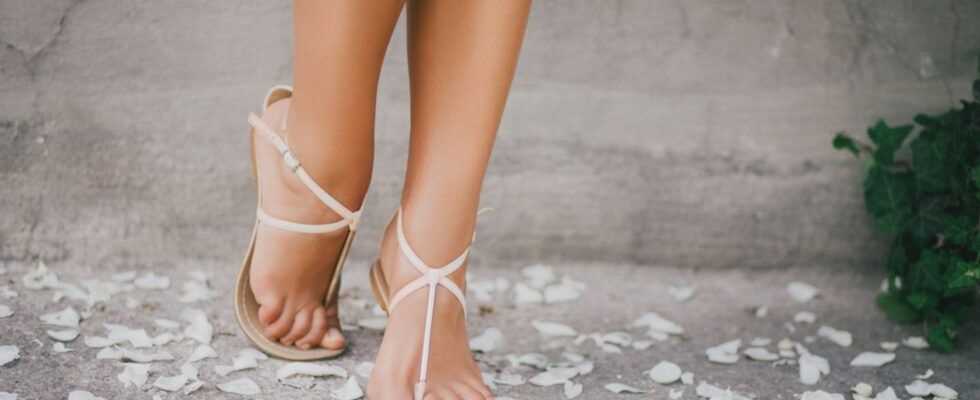Everyone has had blisters on their feet. Here you can find out which helpers can alleviate the symptoms and how to avoid blisters from the outset.
Blisters on the foot: how do they arise?
Bubbles are caused by friction. In the case of blisters on the foot, the cause is usually the friction between the heel and the shoes or socks of the wearer. A damp layer of skin encourages the formation of a blister. The friction causes fluid-filled cavities to form under a layer of skin. The blisters appear particularly quickly on the foot, as socks and shoes often come into close contact with the skin layer.
Process of a bubble
Blisters on the foot or other parts of the body all go through a certain process. This looks like this:
- Sore: The skin becomes reddened by friction, heat and moisture.
- Blistering: The top layer of skin loosens and a cavity forms between the layers of skin in which tissue fluid collects – the blister is formed.
- Open wound: A chafed blister forms an open wound that could become infected.
- Scabbing: Now the wound dries up and crusts form over the blister. The skin can therefore only heal slowly.
- Cure: If a scab has formed, it loosens in the final phase so that the bladder is healed and new tissue is formed.
How can I properly treat blisters on the foot?
There are several ways that blisters on the foot can be treated. These include:
- Use blister plaster: You should definitely not cut off the skin over the blister – it will protect against infection. With a blister plaster you can provide additional stability and protection.
- Prick with a needle: You can easily (!) Pierce superficial bubbles with a clean needle (disinfect beforehand!) So that the liquid can drain off and the skin can dry out. Then it's best to take a blister plaster and stick it over the blister. To speed up wound healing, you can take the plaster off at night so that some air can get to your feet. Be sure to change the patch on the blister regularly.
Blisters on the foot: when to see a doctor?
In principle, the doctor can't do much more than you can with blisters. However, as a diabetic, you should always consult a doctor for treatment of a bladder: as many patients suffer from poor wound healing. In addition, nerve damage to the feet is more common in diabetics, which means that the affected person no longer feels irritation on the foot as well. A blister or other skin damage can become worse in an emergency, so that, for example, inflammation is more likely. Basically everyone should go to the doctor if the bladder does not heal even after more than a week or has even become severely inflamed.
Can I prevent a blister on my foot?
The following tips will help you achieve a Preventing a blister on the foot:
- Vaseline: Especially when you travel a lot and subject your feet to heavy loads, for example before a hike, you should rub them with petroleum jelly to prevent blisters. The skin layer is thus more resilient to the pressure of friction. Under no circumstances should you apply Vaseline to an open wound!
- Socks: Instead of particularly thick socks, you should rather rely on two thin pairs. Then the fabric rubs against each other instead of the foot. Also, make sure that they don't wrinkle in the shoe, because this creates more pressure and a blister develops faster.
- Shoes: When you buy new shoes, make sure that they aren't too tight on your feet. But shoes shouldn't be too wide either, otherwise the foot will slip out permanently when walking and friction will arise again, which favors a blister. Change your shoes regularly so that the point of friction differs and thus no blisters form on your feet.
Tips against a dry nose you get here. We will also show you how you can treat genital warts and remove plantar warts.
If you want to talk to others about wound healing and the correct treatment of blisters, take a look at our BRIGITTE Community.
sources
Schewe, H .: Strong feet – that's what I stand for, TRIAS Verlag, 2007
Plewig, G. & Thomas, P .: Advances in practical dermatology and venereology 2006, Springer Verlag, 2007
Zittlau, Dr. J .: Now I'm helping myself: The best home remedies for all cases, Südwest Verlag, 2010
